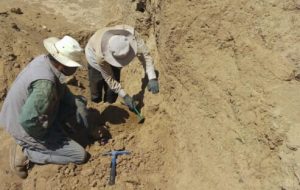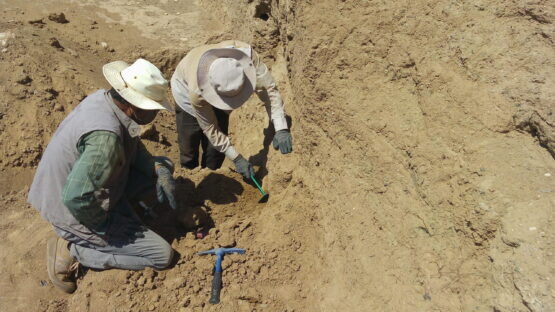Archaeologists confirm Sassanid temple significance previously discovered in northeast Iran
TEHRAN – Archaeologists have confirmed that a previously discovered site in Bazeh Hur, located approximately 70 km from Mashhad in Iran’s Khorasan Razavi province, is one of the largest and most significant Sassanid fire temples in northeastern Iran. The ruined structure is believed to correspond to the historical and religious accounts of the “Azar Barzin


TEHRAN – Archaeologists have confirmed that a previously discovered site in Bazeh Hur, located approximately 70 km from Mashhad in Iran’s Khorasan Razavi province, is one of the largest and most significant Sassanid fire temples in northeastern Iran.
The ruined structure is believed to correspond to the historical and religious accounts of the “Azar Barzin Mehr” fire temple, ISNA reported on Monday.
The discovery, was first made in 2022 by a team led by Iranian archaeologist Meysam Labbaf-Khaniki, who is an associate professor of archaeology at the University of Tehran. He oversaw the excavations that spanned seven archaeological seasons.
The Barzin Hur archaeological site covers 20 hectares and features a settlement, cemetery, and two religious architectural complexes. The site is particularly famous for a stone four-arched structure that dates back to the Sassanid era and was registered as a national heritage site in 1931.
Recent excavations have revealed that the fire temple remained active into the early Islamic period before being destroyed by a catastrophic earthquake. In the latest phase of excavations, archaeologists uncovered vibrant wall paintings, intricate stucco carvings, and other decorative elements that shed light on pre-Islamic art and religious architecture in eastern Iran.
Labbaf-Khaniki emphasized the historical importance of the site, describing the fire temple as a critical element in understanding the social, political, and cultural history of the Sassanid period. He also highlighted the discovery of Parthian to early Islamic pottery, which provides further insights into the continuity of cultural practices in the region.
Given the site’s significance, Labbaf-Khaniki called for urgent preservation efforts to protect this invaluable historical heritage. The findings are expected to not only enhance understanding of Zoroastrian traditions but also enrich the broader narrative of Iran’s architectural and cultural history.
According to sources, Bazeh Hur had been studied by architect/archaeologist Ernst Hertzfeld (1879–1948) and art historian/archaeologist Andre Godard (1881–1965) who wrote articles about the monument.
The Sassanid era (224 CE–651) is of very high importance in the history of Iran. Under Sassanids, Persian art and architecture experienced a general renaissance. Architecture often took grandiose proportions, such as palaces at Ctesiphon, Firuzabad, and Sarvestan, which are amongst the highlights of the ensemble.
Crafts such as metalwork and gem engraving grew highly sophisticated, yet scholarship was encouraged by the state. In those years, works from both the East and West were translated into Pahlavi, the language of the Sassanians.
In 2018, UNESCO added an ensemble of Sassanian historical cities in southern Iran — titled “Sassanid Archaeological Landscape of Fars Region”– to its World Heritage list.
AM
